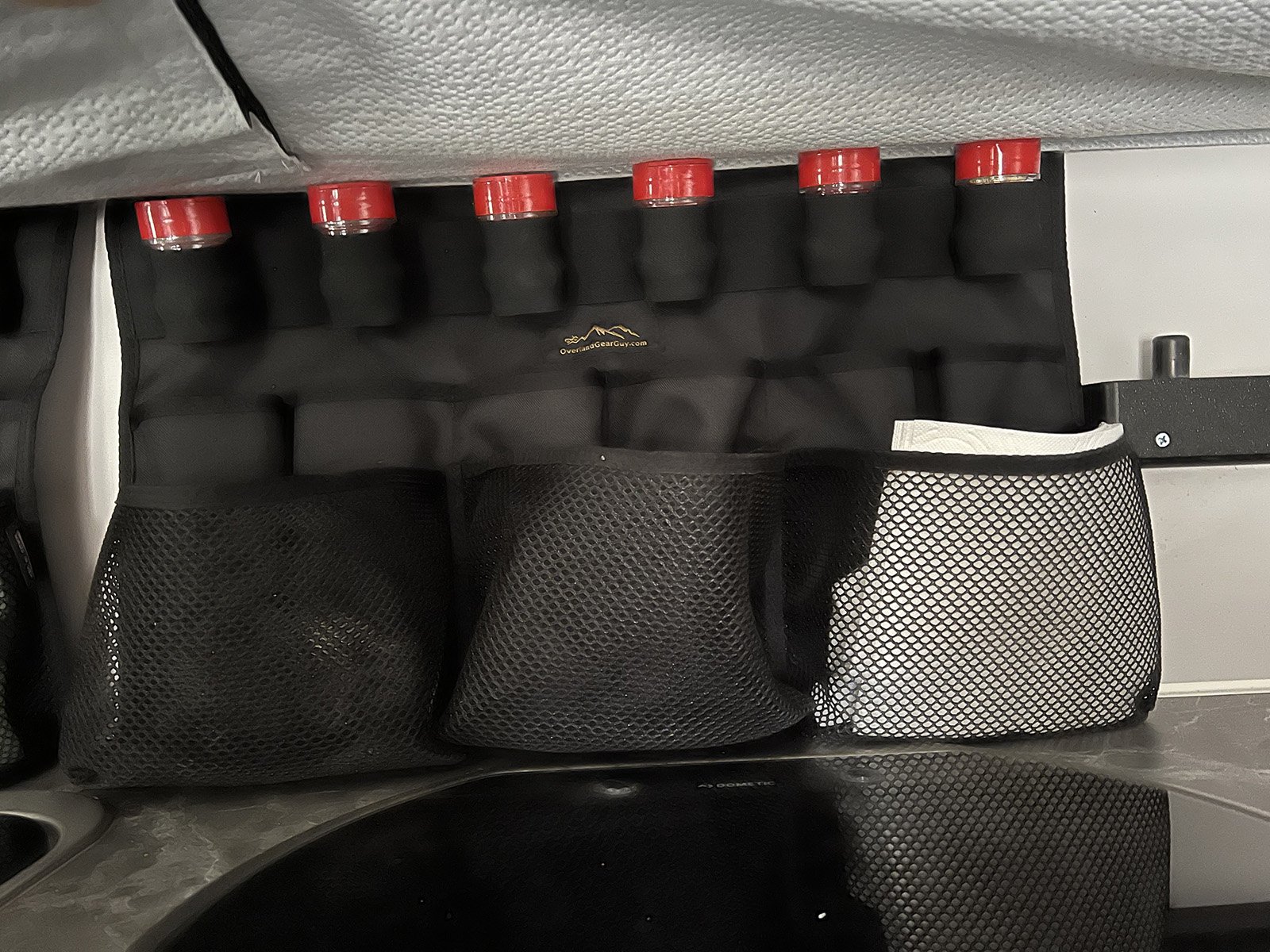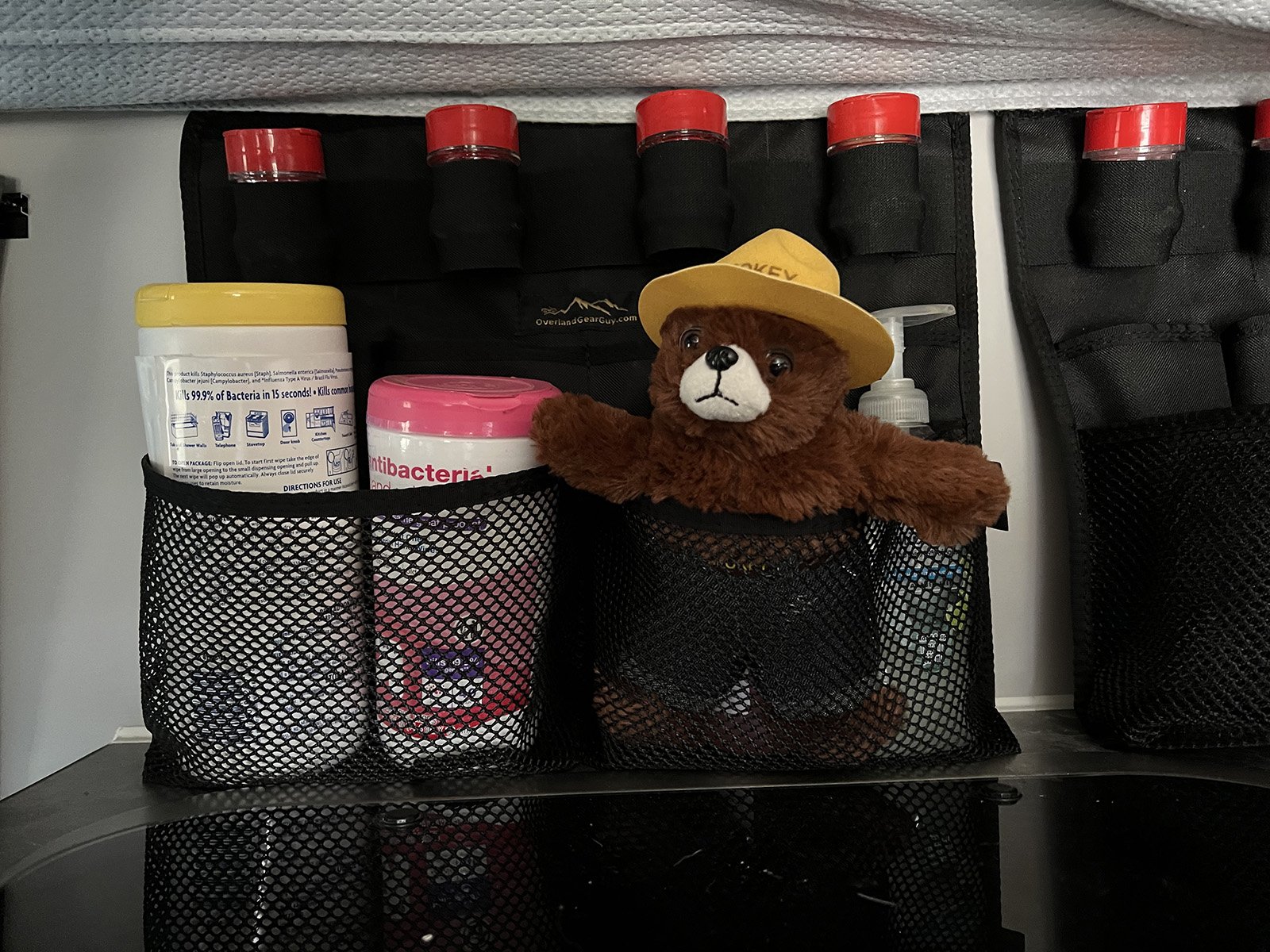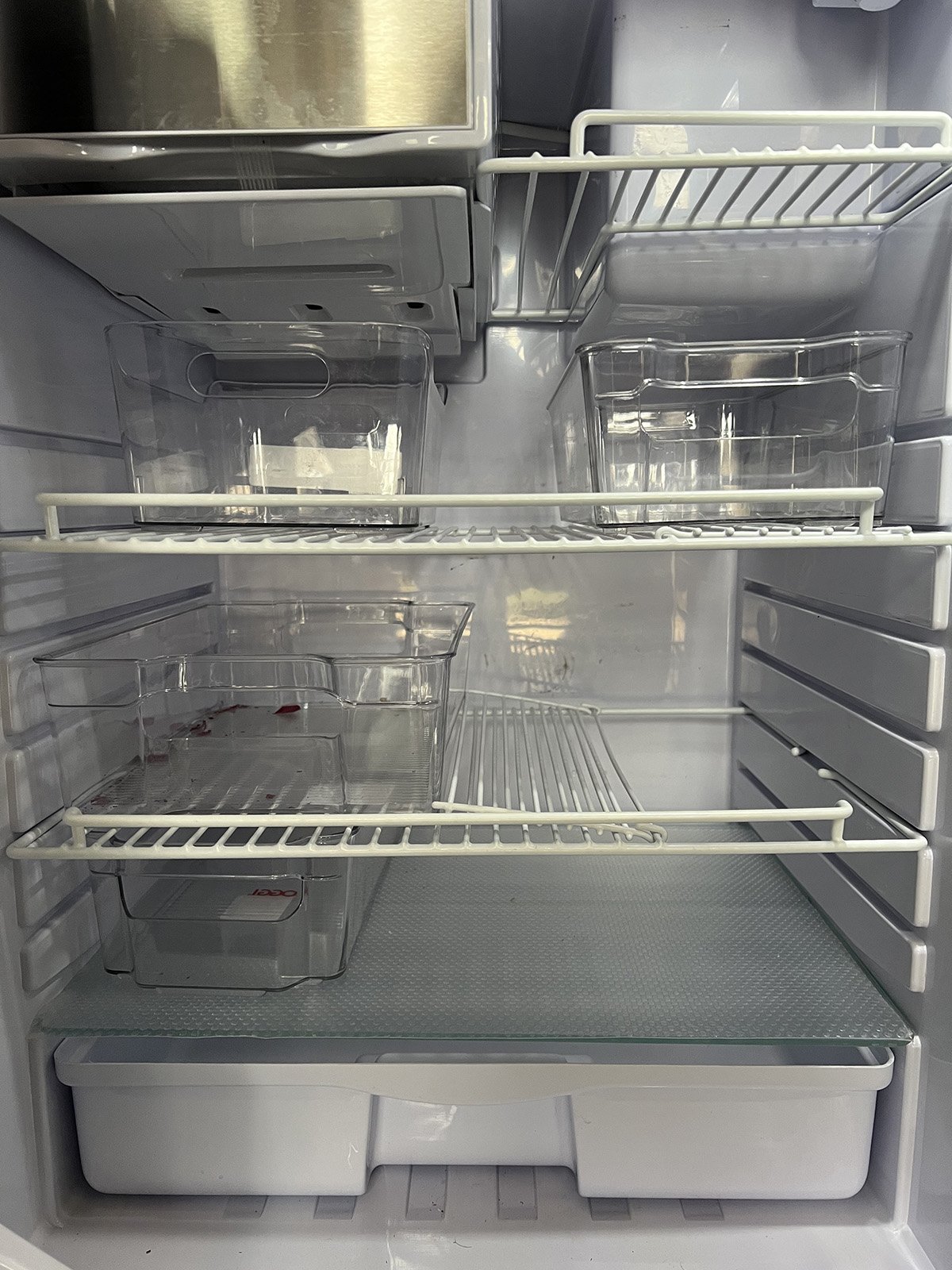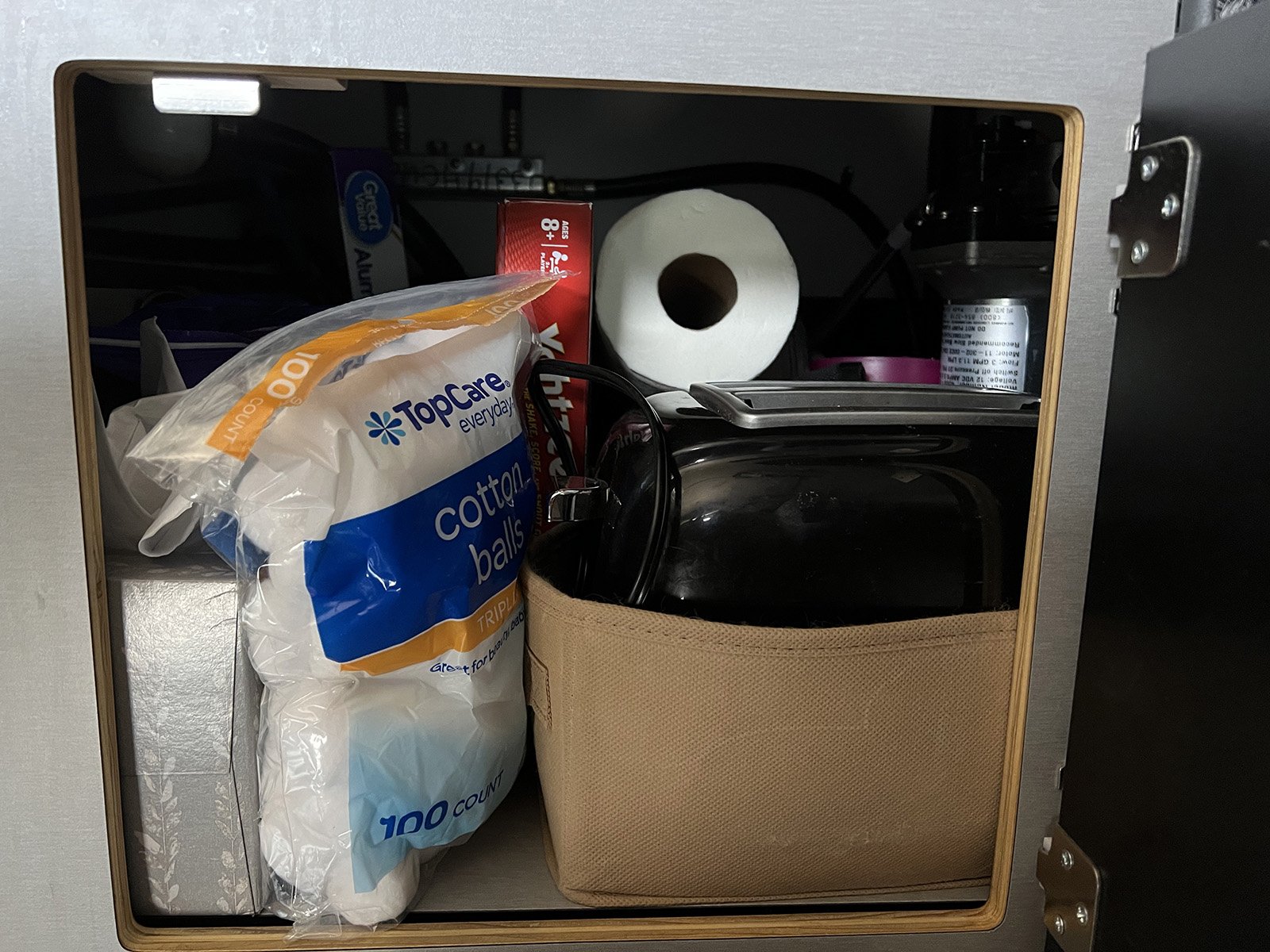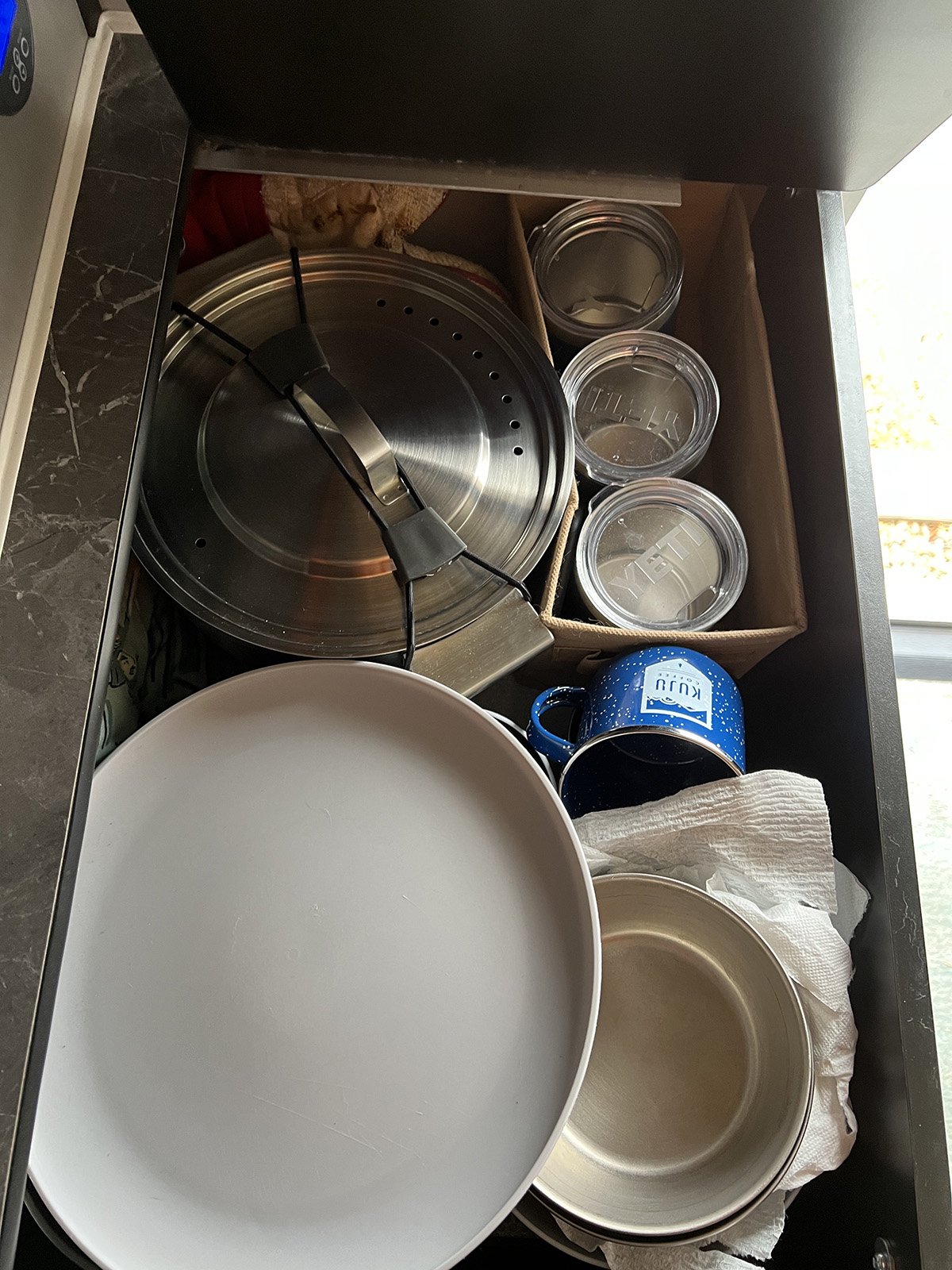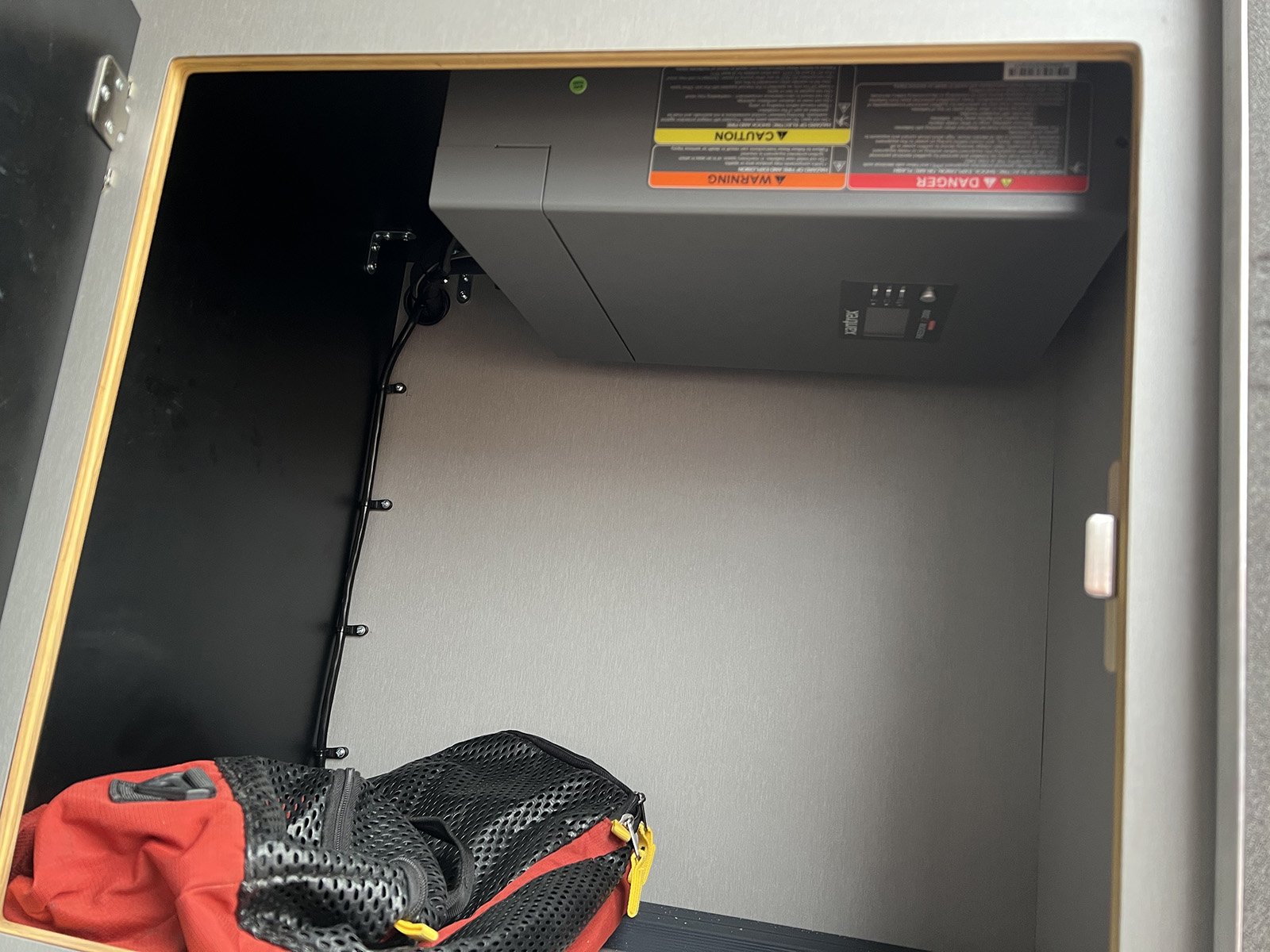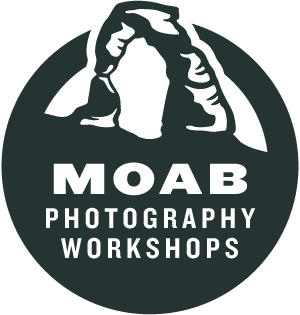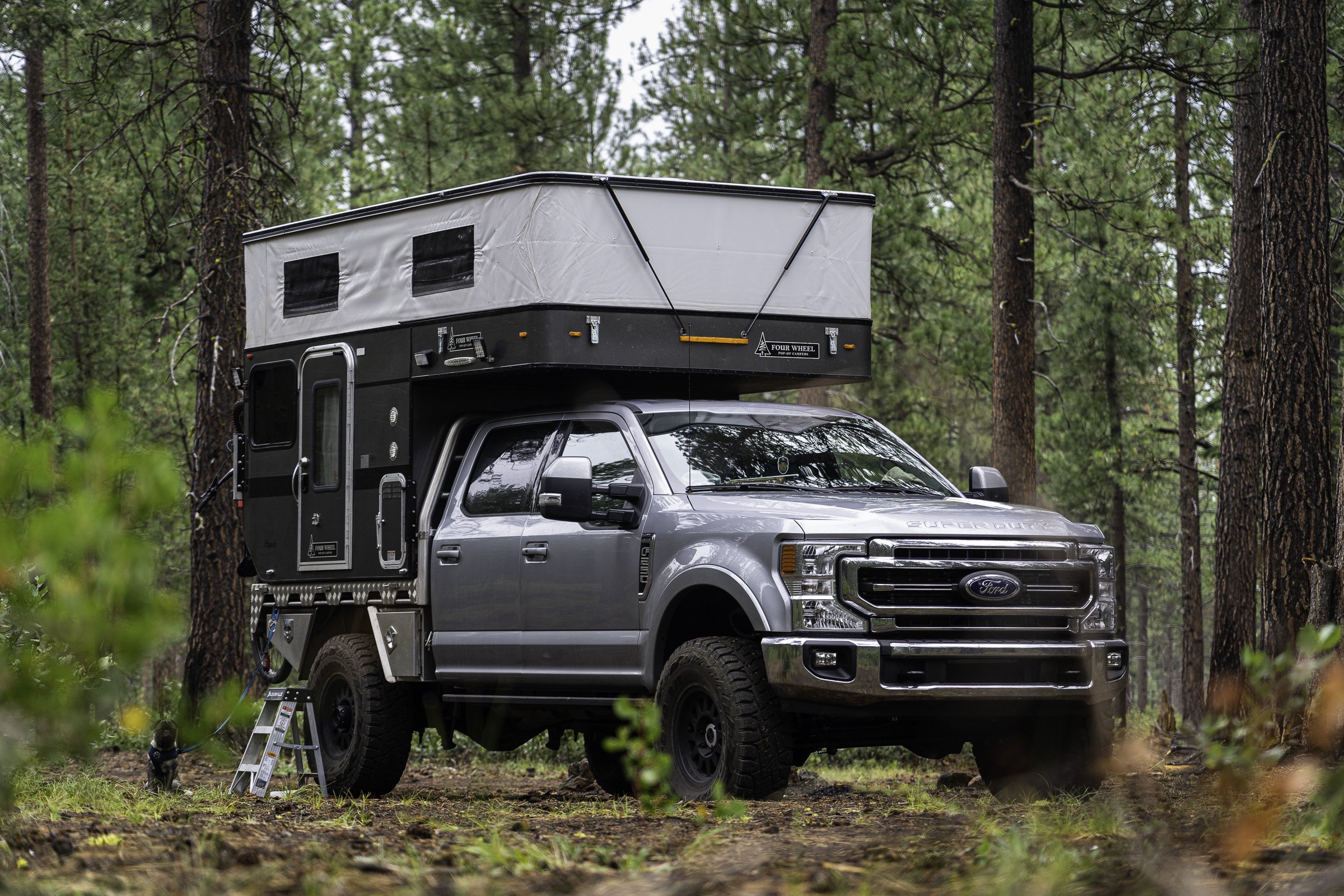Our rig, which we have affectionately named the Funhawg, is not subtle. Everywhere we go it attracts attention…and questions, lots and lots of questions. Trailheads, gas stations, grocery stores and even online, we are regularly approached by folks who want to know more about it. Often, it’s someone who is in the market for a similar camper and wants to know, well…everything. I certainly don’t mind having those conversations. In fact, I enjoy them. We are lucky enough to have a rig that makes people smile and if I can play a small part in helping others build one of their own I’m damn sure gonna do it.
To that end, I thought it would be helpful to publish a series of articles in which I will discuss, in great detail, how we built the Funhawg and with what parts, why we chose them and, now that we’ve got 20,000 miles and 72 nights in it, how it’s working out for us. We did receive some of the parts for free, others at a discount and some were full price purchases. Regardless, I will not pull punches. If something is great, I’ll tell you. If something sucks, I’ll tell you that, too.
To kick off this series, I’ll start by discussing why we chose the Four Wheel Campers Hawk UTE and Norweld Deluxe Weekender flatbed tray. If you haven’t already read it, I published an article in March of this year about things to consider before converting your pickup to a flatbed. Click the following link to read “Flatbed Tray Conversions: Answers To All Your Questions...Even The Ones You Didn't Know To Ask”. I won’t talk too much about the flatbed in this article but now that we’ve got almost a year with it I do have some thoughts I’ll share. The bulk of this article will focus on the camper and why we chose each one of the options on it. Buckle up, this is a long one.
THOUGHTS ON THE NORWELD DELUXE WEEKENDER TRAY
When we purchased our camper in December, 2020, there was really only one option for a flatbed tray that was designed primarily for the overlanding market and that was the Norweld. So, that’s what we got. The build quality is outstanding and the features, including under tray storage boxes, a long drawer at the rear and an integrated 14 gallon water tank, are fantastic. However, you will pay the “overland premium” to put one on your truck. Today, there are a few competitors on the market including MITS Alloy, Overland Explorer Aluma Tray and Bowen Customs, all three of which I would have seriously considered had they been available when I placed my order.
The MITS Alloy and Norweld trays are similar in aesthetics and basic features, but the MITS costs a little bit less. Personally, I prefer the aesthetics of the MITS Alloy over the Norweld. The Overland Explorer Aluma Tray is also similar, but with a design that’s a bit more unique. Lastly, Bowen Customs is, well…custom. They’ve produced a model that is undergoing testing now and are working with a couple of different camper manufacturers, and I suspect they’ll have a production model out very soon. There are other manufacturers as well, most of whom are associated with the industrial or farming/ranching markets.
Now, back to the Norweld. I would rather have had it powdercoated in black but it would have been an additional $2,000+ and I couldn’t justify the extra expense. The MITS and Overland Explorer flatbeds include powdercoating, and they’re still priced lower than Norweld. Had I known then what I know now I would have sucked it up and powdercoated the tray. Why? In June we spent two weeks exploring Montana and one of the endless dirt roads we drove had very recently been treated with magnesium chloride for dust abatement. This created a mud that sprayed off the tires all over the tray and because we were spending several days in the backcountry, we weren’t able to wash it off right away. The raw aluminum tray now has visible pitting/staining on every exposed surface. It isn’t visible from afar but you can definitely see it up close.
Other gripes: the underbed storage boxes are super handy but they are quite awkwardly shaped, requiring you to be a Tetris master to fully utilize the space. The drawer provides a huge amount of storage space but has a small hump in the center that runs the length of the drawer, so larger items don’t lay flat in the drawer. Minor bitch, but the MITS drawer is totally flat. Lastly, the water tank is handy and a welcome addition, but the filling port is awkwardly placed and difficult to use because pressure builds up inside the narrow filling hose, causing the water from your hose to bubble out. Lastly, the backup camera relocation kit that shipped with the tray is worthless. I had the tray professionally installed by the wizards at Boulder Vehicle Outfitters and they were unable to fit the Ford camera into the “universal” bracket. If they failed, I doubt that anyone can make it work.
WHY WE CHOSE THE FOUR WHEEL CAMPERS HAWK UTE
We owned a Four Wheel Campers Raven for a year and a half and used it as kind of a test to determine if that style of travel and camping would work for us. Obviously, we determined that it did because we now own the Four Wheel Campers Hawk UTE, which is a larger flatbed camper than the slide-in Raven. At the time, there weren’t many options in the flatbed camper market. Overland Explorers was getting ready to launch their CAMP-HBE and Bison Overland had just debuted their Space Wrangler, both of which were contenders. We settled on the FWC out of loyalty and familiarity, and because the CAMP-HBE and Space Wrangler were too new. Would we have gone another direction if either one of these models had been in the wild for a while and proven themselves as capable and reliable campers? Very likely. Both use better components and are better insulated than the FWC, and the CAMP-HBE is higher quality than a Four Wheel Camper in nearly every way. If you’re in the market for a camper and haven’t already decided on one, I strongly encourage you to visit FWC and Overland Explorer dealers so you can see the difference for yourself.
I don’t mean to give the impression that we don’t like our Four Wheel Camper Hawk UTE. Quite the opposite, actually. We love it. The ability to access remote campsites and have a few amenities when we arrive cannot be overstated. I am no longer a young man, although I may act like it from time to time. Having a comfortable bed, hot running water, a heater, fridge and a spacious area in which to ride out crappy weather is downright luxurious. Aside from a common issue with the heater that I’ll detail in a moment, we’ve had zero problems with our Hawk UTE. In no way do we regret purchasing it.
FOUR WHEEL CAMPER HAWK UTE OPTIONS AND WHY WE CHOSE THEM
Our Four Wheel Campers Raven was a pretty basic build with very few amenities. It was essentially a shelter from the storm with cold running water, a stove and a heater. After a year and a half with it, we knew which options we couldn’t live without and which ones were unnecessary for our purposes. So, when we ordered our Hawk UTE we felt confident that we had it dialed in to perfection. Nine months and 72 nights later, there’s nothing I would change (from the factory). Below you will find a list of every option we ordered and a couple of aftermarket upgrades we made that aren’t available from the factory.
Flatbed Vs. Slide-In Camper
The first decision we had to make was whether we wanted a larger slide-in camper or a flatbed. After using the slide-in Raven as a family of three plus dog, the decision to move to a MUCH roomier flatbed model was an easy one. Most slide-in campers feature an interior layout that leaves you feeling like you’re living in a hallway. Also, the Hawk UTE features substantially more storage than a slide-in model, including cavernous underbed storage, and a dinette that converts into a second bed. The three of us fit comfortably into the Hawk UTE and don’t feel like we’re living on top of one another.
Additionally, and this is a pretty significant consideration, slide-in campers utilize a problematic turnbuckle system to attach the camper to your truck whereas flatbed models are mounted with four heavy duty bolts. The turnbuckles constantly loosen and have to be tightened, by hand, which requires one to be good at yoga with arms like Inspector Gadget. It was a total pain in the neck with the Raven. The bolts used in flatbed models are, for the most part, bombproof and require little attention aside from the occasional inspection. I’ve heard horror stories about broken turnbuckles and campers getting loose because the turnbuckles weren’t monitored often enough.
Silver Spur Interior and Smooth Aluminum Siding - This decision is 100% based on aesthetics. We prefer the gray interior color scheme of the Silver Spur to the standard maple cabinets and the smooth aluminum siding to the standard corrugated aluminum. I am unaware of any performance benefit to either. In fact, I have been told that the corrugated siding resists scratching better and is easier to repair. We just don’t care for the old school look.
Awning - We didn’t order the factory awning because, well…it’s pretty cheesy and overpriced. There are several aftermarket suppliers whose product is superior to the one offered by FWC that can be had for less money. This is an upgrade we’ve considered but we’re split on it. Melissa wants one. I do and I don’t. Over the summer we drove several of the high alpine passes in Colorado’s San Juan Mountains and there were a few tight squeezes on shelf roads where an attached awning would have been damaged (at best) or torn completely off, damaging the camper in the process. If we do install an awning, it will most likely be the Fiamma F45S with custom support brackets that allow the poles to be secured to the flatbed rather than the ground. Ideally, we would prefer a batwing style awning but they’re not compatible with an FWC flatbed camper.
Camper Jacks - We ordered them on the Raven and only used them once, when we sold the camper. We didn’t purchase them on the Hawk UTE. As far as I’m concerned, the camper is permanently mounted to our truck. When the time comes to sell our rig it’s going as a package; truck, flatbed and camper as one single unit.
Rear Wall Rack - We ordered it with the Rotopax fuel containers and later added Maxtrax recovery boards. The rack alone is a $625 option, which seems pricey for what you get. However, it does provide solid storage for bulky and important items and I am unaware of any aftermarket options that are of a higher quality or lower price. The Rotopax have been a disappointment. I filled both with fuel once, and then you have to vent them every couple of days to prevent fumes from building up inside the containers and when I did use them, the nozzle on both containers didn’t work properly and I probably spilled half as much gas on the ground as I got into the tank. There are aftermarket spouts that resolve this issue but I haven’t bought them.
Lighting Upgrades - We ordered all three; LED exterior lighting package and side and rear mounted LED flood lights. The LED exterior lighting package gives you an LED light strip on each side of the camper and downfacing LED lights at each corner. These lights are not very bright, which is the whole point. They are designed to provide enough ambient light around the camper to allow safe movement but not enough to disturb neighbors if you happen to be camping in a campground. We use them all the time, probably every night we camp, and we almost never stay in developed campgrounds. The LED flood lights are mounted two each on the passenger side and rear of the camper. They’re bright - crazy bright, and we use them all the time, too.
Roof Racks - We did not order a roof rack. The roof is heavy enough and so high off the ground, even in the down position, that storing anything on the roof would be pointless.
Roof Vents - The standard build includes one. We ordered a second one, both of which have reversible fans installed in them. As far I’m concerned, everybody should order dual roof vents with fans. Since we travel with a dog, who stays in a kennel inside the camper when we’re hiking or riding, and with one fan bringing air in and the other pushing air out, the interior camper temperature remains cool enough for our dog in temperatures up to 90+ degrees. Additionally, it’s nice to have a fan over the bed on warm nights. We use the fan over kitchen area when cooking to vent the camper, thus preventing the smoke alarm from sounding and minimizing condensation. On the topic of condensation, using one of the fans on low all but eliminates overnight condensation, which can be a major issue with these campers.
Solar Options, Batteries and Inverters - Our Raven was not equipped with solar. Our Hawk UTE is. We found that we were always on the verge of running out of power in the Raven so when we ordered the Hawk UTE we opted for the dual solar panel setup, which provides 320W of charging power, and dual 6V batteries. Our battery charge has never dropped below 2/3 and we are not conservative with our power usage. Every night we charge watches, phones, cameras, iPads, laptops, etc., use the interior and exterior lights, run the fridge (electric only) and the heater (when it’s cold enough) and usually have one of the roof fans on. Dual solar panels and 6V batteries has proven to be an invaluable option.
A word on lithium batteries: For $5,650 you can purchase a dual lithium battery setup from Four Wheel Campers. This does include the gold standard Redarc power management system, itself a $2,000 expense, but I honestly can’t envision a time when the dual 6V batteries would be insufficient. If you want as much power insurance as possible, dual lithium batteries will provide you 200ah, which should be more than enough to power, well…anything and everything.
The Hawk UTE has two standard power outlets; one by the kitchen and another by the dinette. These outlets only work when you’re plugged into shore power unless you install a power inverter, which we did aftermarket since you can’t order one factory installed. We purchased a Xantrex and had it installed at Boulder Vehicle Outfitters. With the simple push of a button, we’ve got 2,000 watts of clean power running to the outlets and we’ve used it to power a toaster, laptops and all kinds of other electronics. This was a $1,300 upgrade. Yes, you can find cheaper inverters but in this category, you get what you pay for.
Hot Water Heater, Toilet and Shower - Just because you can get an interior shower doesn’t mean you should. Doing so forces you to give up a storage area under the dinette and is awkward to set up and use. We didn’t order one. However, we did order the hot water heater and exterior shower, both of which see regular use. Our Raven had neither, and doing greasy dishes required us to boil water, which was less than optimal. We’ve used the outside shower to wash particularly grimy dishes, clean our bikes, wash sand off our feet and yes, to shower. I can’t tell you how lavish it is to wash your hands and face with steaming hot water on a cold morning in the mountains.
Melissa and I gave serious thought to ordering the cassette toilet but in the end, we decided not to for a couple of reasons. The toilet is installed just inside the door on the right, in a cabinet that provides substantial storage when you don’t have a toilet. We use this area as a pantry and we also store all of our plates, pots and pans here. Ordering the toilet would have forced us to give up this space. Also, there is literally no privacy with the toilet so unless you’re traveling solo you’d better be really close and comfortable with your partner. Lastly, this cabinet is where our inverter was installed. It is not a small piece of equipment and if this cabinet weren’t available I can’t imagine where else it might fit.
Furnace - The Four Wheel Camper furnaces are crap. They’re terrible. Entirely unreliable and this has been a known issue for years that FWC doesn’t seem to have any desire to resolve. We had nothing but issues with the heater in our Raven and yet we still ordered one in our Hawk UTE because frankly, we’re sissies and one of the reasons for having a camper is to remain comfortable in inclement weather. The heater worked great through spring but when fall rolled around, it stopped working. Four Wheel Campers will tell you that it’s the sail switch, or the circuit board, or maybe the venting, but what they should really do is install a quality heater instead of the junk for which they charge $755. Some people get lucky and never have an issue. We’ve had two FWC heaters and they both suffered from the same maladies.
I had neither the time nor interest in attempting to diagnose and resolve these issues so we had our friends at Boulder Vehicle Outfitters replace the factory heater with a Propex HS2000 with a digital thermostat. This heater has been used extensively in conversion vans and has a reputation for reliability. We’ve been using it for about three months now and not once has it failed to fire up. This was a $1,000 aftermarket upgrade and one that I recommend if you’re stuck with an unreliable FWC heater.
Refrigerator - The standard fridge is a 1.7 cu. ft. model big enough to hold two beers, one onion, a pack of cheese and three small salamis. We upgraded to the largest refrigerator offered, the 130L model. It even has a small freezer in which we store a Ziploc bag of ice so we can enjoy adult beverages like bloody mary’s and margaritas at camp. Sometimes we put ice cream in there. This fridge holds enough food for about five days on the road. It only operates on AC/DC power, which is reason enough to upgrade to dual batteries. We’ve had three-way fridges that work on propane and they’ve never been reliable at higher elevations. We’ve camped at over 10,000’ several times and our fridge has never let us down. If you’re a solo traveler you can probably get away with a smaller model.
Sink and Stove - You have two options; the factory models that look like something you’d find in a travel trailer from the 50’s, or the smooth mount Euro style sink and stove. Needless to say, we upgraded to the flush mount. It looks cleaner, the stove has an auto-igniter and, when the lids are down, you’ve got more counter space so this option isn’t entirely about vanity and aesthetics, it improves functionality, too. You’ll have to decide if it’s worth $625 to you.
Thermal Pack - So much yes. Our Raven did not have one and condensation was a huge issue. We ordered it with the Hawk UTE and rarely do we ever have an issue with condensation. I’m convinced that it also keeps the interior warmer when it’s cold out, and cooler when it’s warm out. It looks kind of cheesy but it is effective.
Accordion Style Entry Steps, Side Wall Steps, Interior Carpet Kit, King Bed Slideout and Water Tank Cushion - The accordion steps are pretty smart looking and functional but we opted for a small step ladder. Saved us over $500 and since it’s mobile we can use it anywhere around the camper to do things like operate the rear roof latches that are way too high to reach from the ground. You should also consider that in a tight campsite the accordion style steps may not have sufficient room to fully extend. We wrap our small step ladder in a blanket and store it just inside the camper door when not in use.
We don’t have a roof rack and didn’t order the side wall steps, which are designed to provide access to the roof. I can’t imagine why you might need them if you don’t have a roof rack.
The interior carpet kit is a $250 option for about $25 worth of carpet. We bought a nice rug that fits perfectly in the doorway and extends the full length from the door to the fridge.
We had the king bed slideout in the Raven but only because all three of us slept in that bed and we needed the room. We didn’t order it in the Hawk UTE and have no regrets. If you’re a bigger person or just like to have lots of room for nighttime activities, this might be a good option.
We suckered up and spent $185 for the water tank cushion. The fabric matches the rest of the cushions and it’s nice to have it there when we use it as a seat, but if you’re not OCD about everything matching you can probably make your own for a lot less money.
That covers all the factory options and a couple of our aftermarket upgrades. Next I’ll cover a few things that many people may not consider as well as a few tips that we’ve found have helped to make our Hawk UTE even more livable.
Windows - Four Wheel Campers uses glass windows. I hate this. Sure, they’re easy to clean and they look nice, but I’d much rather have the Euro style plastic windows like the Arctic Tern models made by Tern Overland. The include built-in roll up screens and blackout shades, and they tilt open so you can even use them in the rain. Most importantly, they won’t shatter, which is a very real consideration when using your camper offroad. I’m always worried that a tree branch is going to snap back and bust a window, or that a rock will fly up and do the same. I have researched replacing all of the factory windows with Arctic Terns and while it is possible, it comes with a hefty price tag.
4XLand4XSea Pouches - I don’t care how much storage you have inside a truck camper, you can always have more. This is a family owned business and their pouches mount easily using the velcro strip of the thermal pack that you ordered because I already told you how important it is, right? But seriously, we have three of these pouches, one for each of us, and inside we throw our headlamps, wallets, watches, charging cords, and more. They’re a cheap and easy way to add storage to your camper.
Overland Gear Guy Kitchen Organizers - These organizers also attach to the velcro of your thermal pack and provide even more room for storage of spice bottles, bungee cords, napkins, bottles of lotion/contact lens solution/hand and dish soap and more. They’re well made, right here in Utah, and the utility they provide is fantastic.
Voited Blankets - We each keep a Voited Cloudtouch blanket in the camper and have well over 100 nights snuggling under them. Melissa and I use a double sleeping bag on the bed over the cab, and we both have our own Voited blanket. On warmer nights, I only use the blanket. When it’s cold, it’s nice to pull the soft blanket up around my face to seal in the warmth and make me feel like I’m sleeping on my bed at home. If you buy one, use code BRETEDGE20 and you’ll get 20% off your purchase. I’ll get a small kickback that helps me stay motivated to write these long, hopefully useful blog posts.
Tochta Mattress - The mattresses in Four Wheel Campers are very firm and are basically one solid piece of high density foam. They do not provide the optimal sleeping experience. I know several people who have replaced their factory mattress with one from Tochta and all have raved about them. They can be ordered in nearly any dimension, with or without radius corners, and they offer an additional inch of cushioning. Whether or not this will impact your ability to leave all of your bedding in place when you lower the roof will depend on how much bedding you leave up there and since we haven’t yet replaced our mattress I have no personal experience to share with you.
Storage Bins - We use plastic storage bins in the fridge and collapsible fabric bins in the pantry and under the sink, both of which can be found at TJ Maxx stores for a lot less money than you’d spend elsewhere, even on Amazon. Soft side packing cubes fit nicely under the bed and allow easy organization of clothing. This helps to keep everything easily accessible and in place when navigating rough roads or hitting giant potholes. We bought cheap pushbutton LED light strips that use 3M adhesive for attachment literally anywhere to light up the interior of the dark, cavernous storage cubbies.
Alright folks, I think that about covers it. Got questions? Leave a comment and I’ll respond as quickly as I can. I hope you’ve found this post useful as you shop for a new camper!
View the gallery below to see a few photos of how we’ve organized storage space in our 2021 Four Wheel Campers Hawk UTE. I apologize for the lameness of the photos. I shot them with an iPhone while the top was down so I could get them added to this post quickly. I’ll try to shoot some better photos at another time
